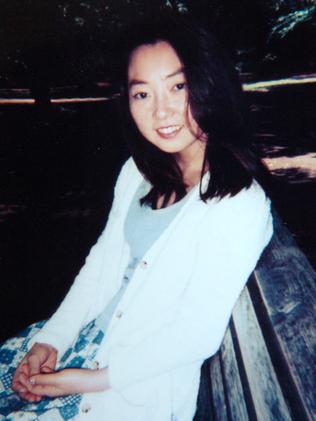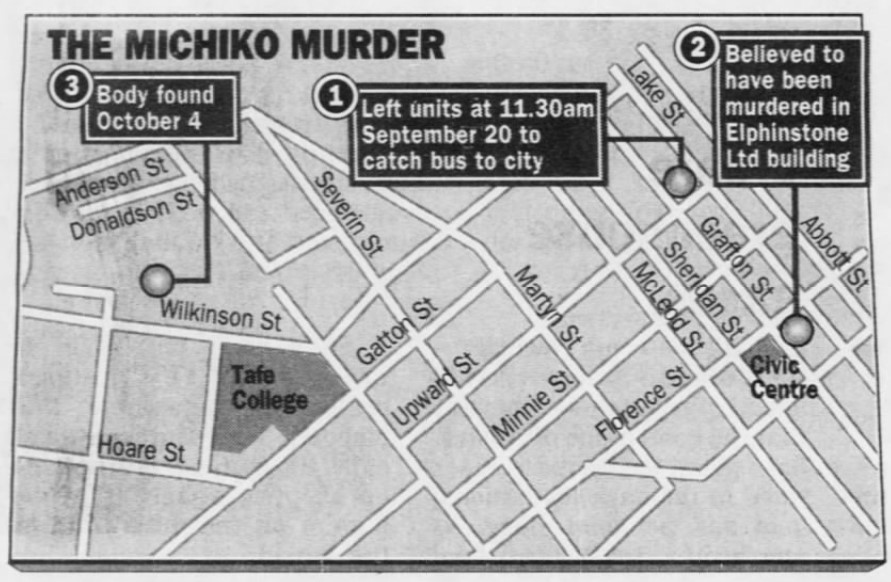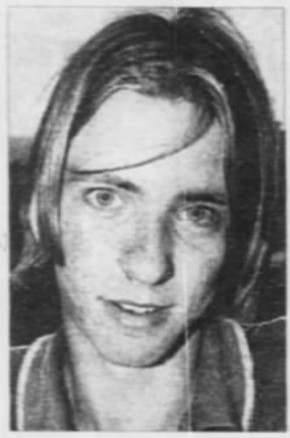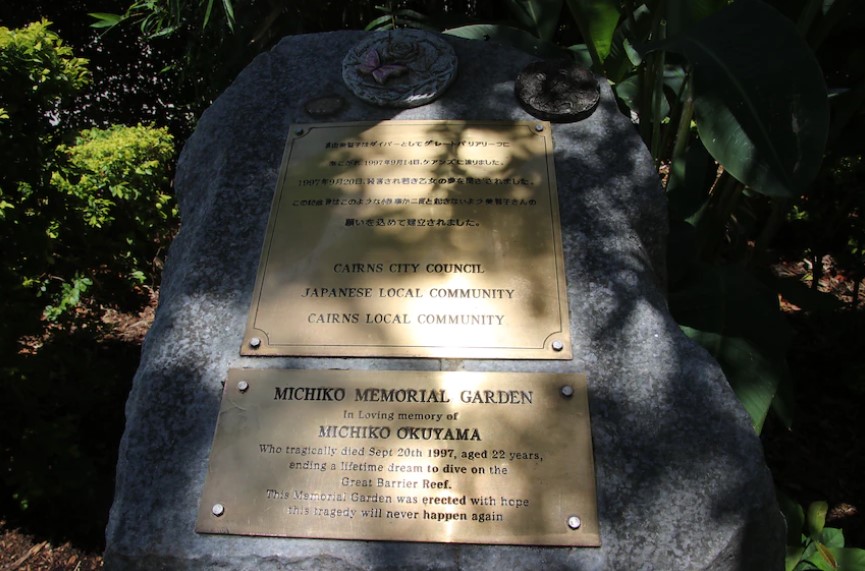A young woman travels from Japan to Australia to follow her dreams. But a few days after she arrives, she suddenly disappears. What happened to Michiko?
Episode Media




Episode Sources
- The murder case, in which an Australian boy killed our daughter
- Japanese woman abducted and killed in Cairns
- Youth, 16, charged with murder of Japanese tourist
- Tourist’s murder alarms Japanese
- Tourist killing: move to calm Japanese fears
- Young killer wheeled tourist’s body through busy street, police claim
- Death in a strange land
- Tragic end for a woman with a dream
- The accused: Bright, eager for attention
- Teen loses appeal against life term for Okuyama murder
- QCA 231 SUPREME COURT OF QUEENSLAND C.A. No. 452 of 1998 Brisbane
- Cairns couple keeps vow to family of murdered Japanese student Michiko Okuyama
Episode Transcript
Welcome back to Bite-Sized Crime. This week we’re traveling across the world for a case that sent shockwaves through two countries. This episode includes graphic descriptions, so listener discretion is advised.
Michiko Okuyama grew up in Yokohama, Japan, a port city just south of the nation’s capital of Tokyo. The second largest city in Japan, Yokohama sits on the western shore of Tokyo Bay and is considered a major hub of industry and culture.
Growing up along the water, Michiko developed a love of the ocean and had dreams of one day swimming in the Great Barrier Reef. After secondary school, Michiko worked as a swimming instructor to support herself while also working on her scuba divers license. She was determined to follow her dreams.
And in 1997, those dreams were about to come true.
Now 22 years old, Michiko had her master scuba diver certificate and was on her way to Cairns, Australia, the gateway to the Great Barrier Reef. Michiko had obtained a 12-month work visa and planned to spend the next year honing her diving skills so she could eventually become a Divemaster. She told her family that she wanted to become an advocate for diving and for conservation of the reef, introducing people from all over the world to the beauty of Australia’s natural wonder.
On September 14, 1997, Michiko arrived in Cairns. Her parents had rented her an apartment in the city center, just a few blocks away from the waterfront. It was a busy area, the streets lined with shops, schools, and office buildings. Michiko was looking forward to exploring the city once she got her bearings.
On September 19th, just a few days after arriving in Australia, Michiko called her parents back in Japan to let them know she was alright and that she was settling in. The apartment was clean, her roommate was friendly, and she was excited about this new chapter of her life. Naturally, her parents were supportive but worried. Michiko didn’t speak much English, and she was in a new country surrounded by strangers. Her parents reminded her to be careful, and Michiko promised she would be. They hung up the phone with plans to speak again in a few days.
The next morning, Michiko told her roommate that she needed to do some shopping. She left the apartment around 11:30am and hopped on a bus headed downtown. Her destination wasn’t far from the apartment, but Michiko wanted to get used to using the public transportation in Cairns. She stopped at the post office to mail a few letters to friends back home, then spent some time at the market getting food for supper. Grocery bags in hand, Michiko headed back to the apartment.
But somewhere along the short walk home, Michiko disappeared.
When Michiko didn’t show up at the apartment that evening, her roommate was concerned, but thought maybe Michiko had made plans for the night. After all, they did have a bit of a language barrier – perhaps Michiko had told her what she was doing and she just hadn’t understood. But Michiko didn’t come home the next morning, or the morning after that. The roommate knew that something was going on. She found the phone number for Michiko’s family in Japan and gave them a call, asking if they had heard from their daughter.
Michiko’s parents were immediately alarmed. They hadn’t heard from Michiko since their phone call on the 19th, and now her roommate was saying she hadn’t seen her since the 20th. Their daughter would never just go off somewhere without telling anyone. It was clear that something bad had happened.
Michiko was reported missing to the Cairns police on the evening of September 22nd, 1997. She hadn’t been seen for over 48 hours, so time was of the essence.
The days following Michiko’s disappearance were filled with a flurry of activity. Michiko’s parents contacted the Japanese Consulate in Cairns to let them know that a Japanese citizen was missing in the city. Then they made arrangements to fly to Australia as soon as possible.
The day before they left Japan, a letter arrived in the mail – a letter from Michiko, the one she had mailed the day she vanished. This was a heartbreaking reminder of their daughter’s excitement about her life in Australia, and it only increased their urgency to find her.
Michiko’s parents landed in Cairns on September 25th, where they were immediately put in contact with the local police department. Through a Japanese interpreter, they were updated on the facts of the case as it stood so far. The police had been scouring the city for Michiko, hanging up fliers and putting her picture on the local news every day. They even dressed up a mannequin to look like Michiko and placed it in the city center, hoping that someone would remember seeing her the day she disappeared.
But days passed, then weeks, and there was no sign of Michiko. Finally, on October 5th, the family received devastating news – a body had been found.
Just two miles from the city center, a man returning from vacation noticed a strong smell of decay coming from the back of his property. When he approached the swampy area, he discovered the decomposing body of a woman, naked and covered in soil and palm branches. Investigators who arrived at the scene noticed that there were also small pieces of trash underneath her body, which seemed odd for an otherwise litter-free area.
The body was taken to the coroner’s office for examination and autopsy. Because of the advanced state of decomposition, a specialist was called in from the state capital to help make the identification. Dental records confirmed what investigators suspected: the young woman was Michiko Okuyama.
The autopsy revealed that Michiko had been badly beaten. She had multiple facial fractures, and her lungs were filled with blood. The coroner stated that she had died from blood inhalation, and her death was ruled a homicide.
The discovery of Michiko’s body renewed public interest in the case, but it also unleashed a wave of international panic. Australia and Japan had always been friendly with each other, and Australia was a popular destination for thousands of Japanese tourists every year. But the news that a Japanese citizen had been brutally murdered just six days into her visit had whipped the international community into a frenzy. Australian authorities rushed to defend their country, desperate to reassure potential visitors that Cairns was a safe city – this was just “one of those things.”
In my research, I was disheartened to see just how much media coverage was devoted to the impact on tourism that Michiko’s death would have, and how little was dedicated to Michiko herself. In a statement to the press, the director of the Australian Tourism Commission said, “…we are reassuring the Japanese public that Australia is still a safe country to visit. It was an isolated event and could have happened anywhere, but it happened in Cairns. In the long-term, I don’t think it will affect our visitations from Japan.”
Insensitive comments aside, the international impact did put more public pressure on the police to solve the case, and it kept the story in the public eye. Tips had been pouring in, and investigators pieced together the few clues they had. Within days, they had made an arrest, and the truth of Michiko’s death was revealed.
On October 7th, 1997, police announced that they had arrested a 16-year-old boy for the murder of Michiko Okuyama. Under Australian law, his name has never been released, and court documents only refer to him as “D”, so that is what I’m calling him in this podcast.
According to the Sydney Morning Herald, D had dropped out of school and left home at the age of 14, living in a camper in an empty lot, trying to find work in Cairns but not having any success. Recently, D and a few friends had begun hanging out in an abandoned warehouse on Grafton Street, just two blocks from Michiko’s apartment.
On the afternoon of September 20th, Michiko walked past the warehouse around 12:30, her recently purchased groceries in hand. According to court documents, D told police that he saw her walking by, but that he went inside when she was still about 20 yards away. After that, he couldn’t seem to remember anything until the next day, when he just happened to find Michiko’s body in the warehouse.
Naturally, investigators didn’t believe this convenient memory lapse. They laid out a different scenario for D, one where he lured Michiko into the warehouse, then brutally beat her and left her to drown in her own blood.
It’s unclear how long Michiko was in that warehouse, how long she was left alive before being killed. The abandoned building had a soundproof vault hidden underneath the stairs. Investigators believe that D may have kept Michiko alive for several days. No one would have been able to hear her cry for help.
After D killed Michiko, he left her body in the vault for several days. On October 1st, in the middle of the afternoon, multiple people spotted a teenaged boy dragging a large trash can through the streets of the city center. One witness told the Sydney Morning Herald, “It stood out because you don’t expect to see someone pulling a wheelie bin along at that hour of the day. It certainly struck me as odd.”
According to reports, investigators believed that D wheeled Michiko’s body through the streets of Cairns in that bin, dragging it over 2 miles to the swampy area where it was later found. This would explain the small pieces of trash found underneath Michiko’s body. D then wheeled the bin all the way back to the warehouse, where police eventually discovered it covered in blood.
During their raid of the warehouse, police also found large amounts of blood inside the steel vault, and in an upstairs room, the bags of groceries Michiko had purchased. It seemed as though D hadn’t even bothered to clean up the evidence of his crime.
In early October of 1997, D appeared before the Cairns Children’s Court and pleaded not guilty. Other than his attorney, he was alone – no parents or family members were by his side.
Meanwhile, Michiko’s family was making funeral arrangements. They hired a local tour guide to take them out on the water, where they scattered Michiko’s ashes in the Great Barrier Reef.
In September of 1998, a year after Michiko’s death, her murderer went on trial.
Although D was tried as a juvenile, the trial was made fairly public, probably due to the high-profile nature of the case and the international interest. Michiko’s parents returned to Cairns for the trial, sitting in the audience for the entire ten-day ordeal.
Dozens of witnesses were called, and the prosecution laid out their case against D. They described the brutality of his actions and the callousness with which he carried out the disposal of Michiko’s body. The case was largely circumstantial, but the physical evidence found in the warehouse was enough to convince the jury. After just 40 minutes of deliberation, they found D guilty of the murder of Michiko Okuyama.
A judge sentenced D to life in prison, a sentence that was only permissible under Australian law because the crime was particularly heinous. His attorney filed an appeal, but the court upheld the sentence, saying that D showed no remorse after the crime, and that “his conduct after the death was macabre.” The court documents also mentioned that D had been evaluated by a psychiatrist who said that he was “someone who will on the one hand, deny doing it, while on the other hand drop hints that he has done it.”
On the one year anniversary of Michiko’s death, the local community in Cairns dedicated a garden in her memory, where a golden plaque reads, “In loving memory of Michiko Okuyama, who tragically died September 20th, 1997, aged 22 years, ending a lifetime dream to dive on the Great Barrier Reef. This memorial garden was erected with hope this tragedy will never happen again.”
For years, Michiko’s family traveled from Japan to Australia to visit the garden. But in the 25 years since her death, the visits have become less frequent as her parents have aged and the trip has become more difficult. A local Australian couple, John and Luiza Grave, have tended the garden every day since it was planted, and they promised Michiko’s mother they would care for it as long as they could. It is a beautiful reminder of a young woman who followed her dreams as far as she could, and a community who embraced a stranger as one of their own.
